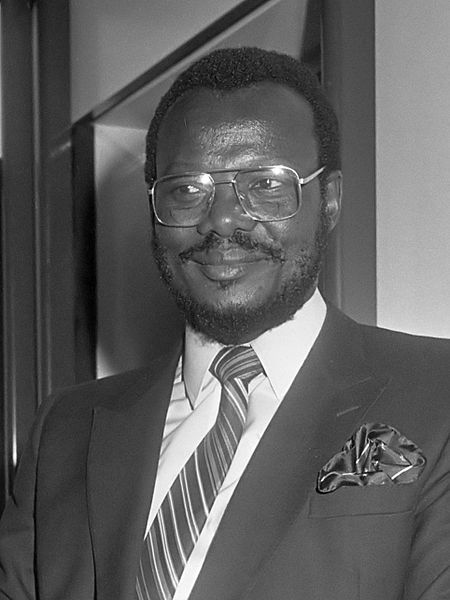1994 South African general election
General elections were held in South Africa between 26 and 29 April 1994. The elections were the first in which citizens of all races were allowed to take part, and were therefore also the first held with universal suffrage. The election was conducted under the direction of the Independent Electoral Commission (IEC), and marked the culmination of the four-year process that ended apartheid.
Image: Nelson Mandela 1994
Image: Frederik Willem de Klerk, 1990
Image: Mangosuthu Buthelezi (1983)
Image: Constand Viljoen 1984
South Africa, officially the Republic of South Africa, is the southernmost country in Africa. It is bounded to the south by 2,798 kilometres (1,739 mi) of coastline that stretches along the South Atlantic and Indian Oceans; to the north by the neighbouring countries of Namibia, Botswana, and Zimbabwe; and to the east and northeast by Mozambique and Eswatini. It also completely enclaves Lesotho. It is the southernmost country on the mainland of the Old World, and the second-most populous country located entirely south of the equator, after Tanzania. South Africa is a biodiversity hotspot, with unique biomes, plant and animal life. With over 62 million people, the country is the world's 23rd-most populous nation and covers an area of 1,221,037 square kilometres. Pretoria is the administrative capital, while Cape Town, as the seat of Parliament, is the legislative capital. Bloemfontein has traditionally been regarded as the judicial capital. The Constitutional Court, the country's highest court, is located in Johannesburg.

Front of Maropeng at the Cradle of Humankind
Portuguese explorer Bartolomeu Dias planting the cross at Cape Point after being the first to successfully round the Cape of Good Hope.
Charles Davidson Bell's 19th-century painting of Jan van Riebeeck, who founded the first European settlement in South Africa, arrives in Table Bay in 1652
Depiction of a Zulu attack on a Boer camp in February 1838








